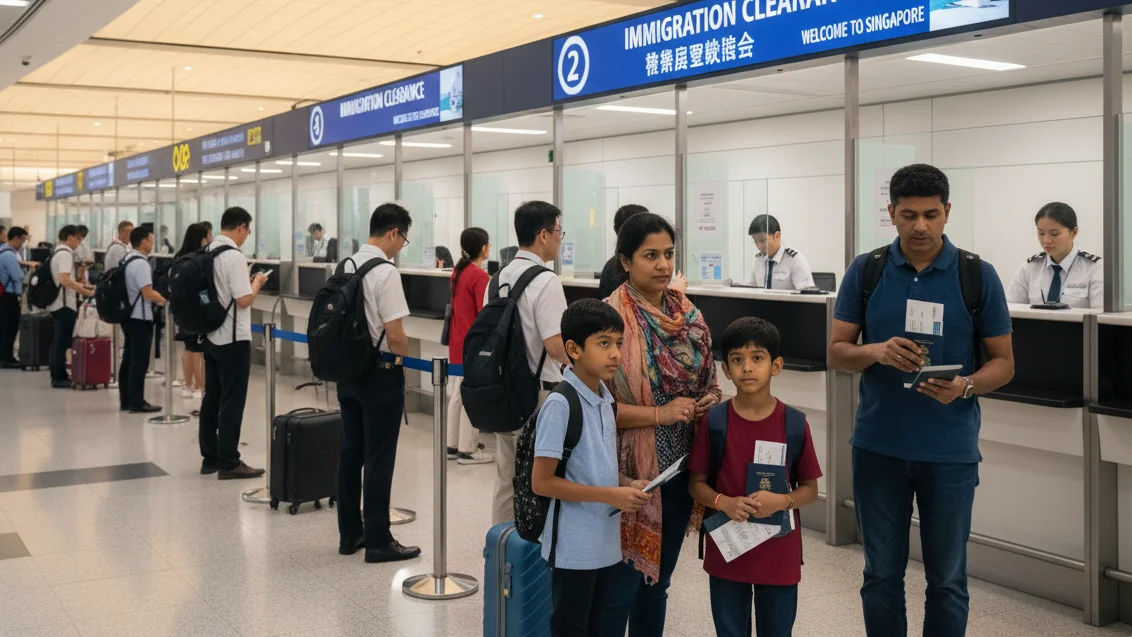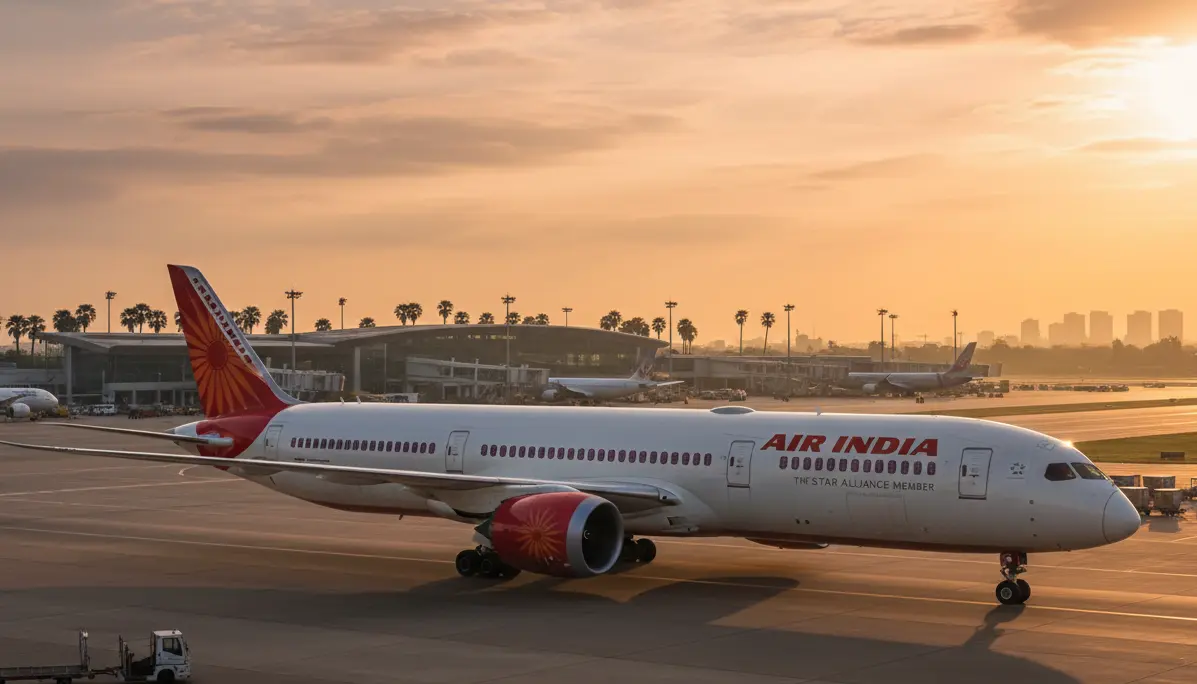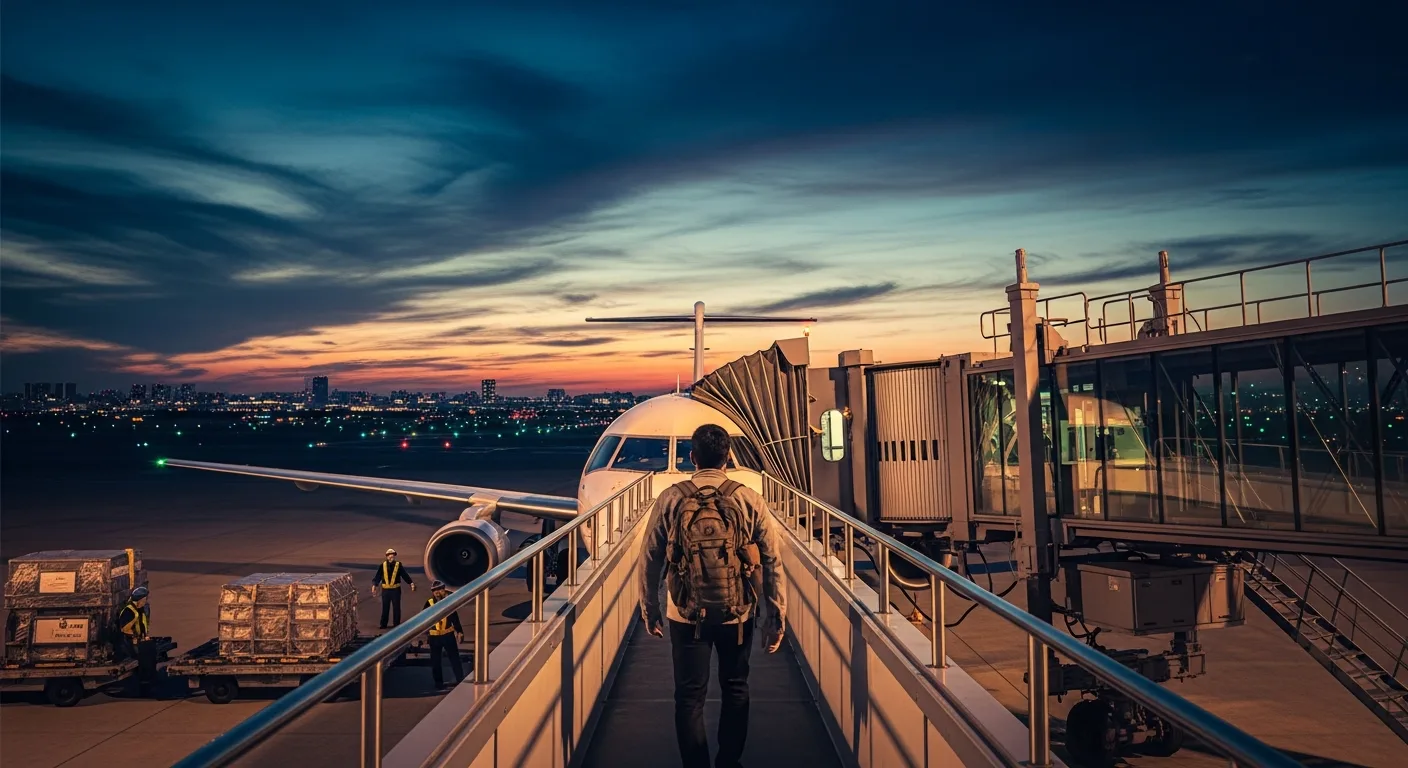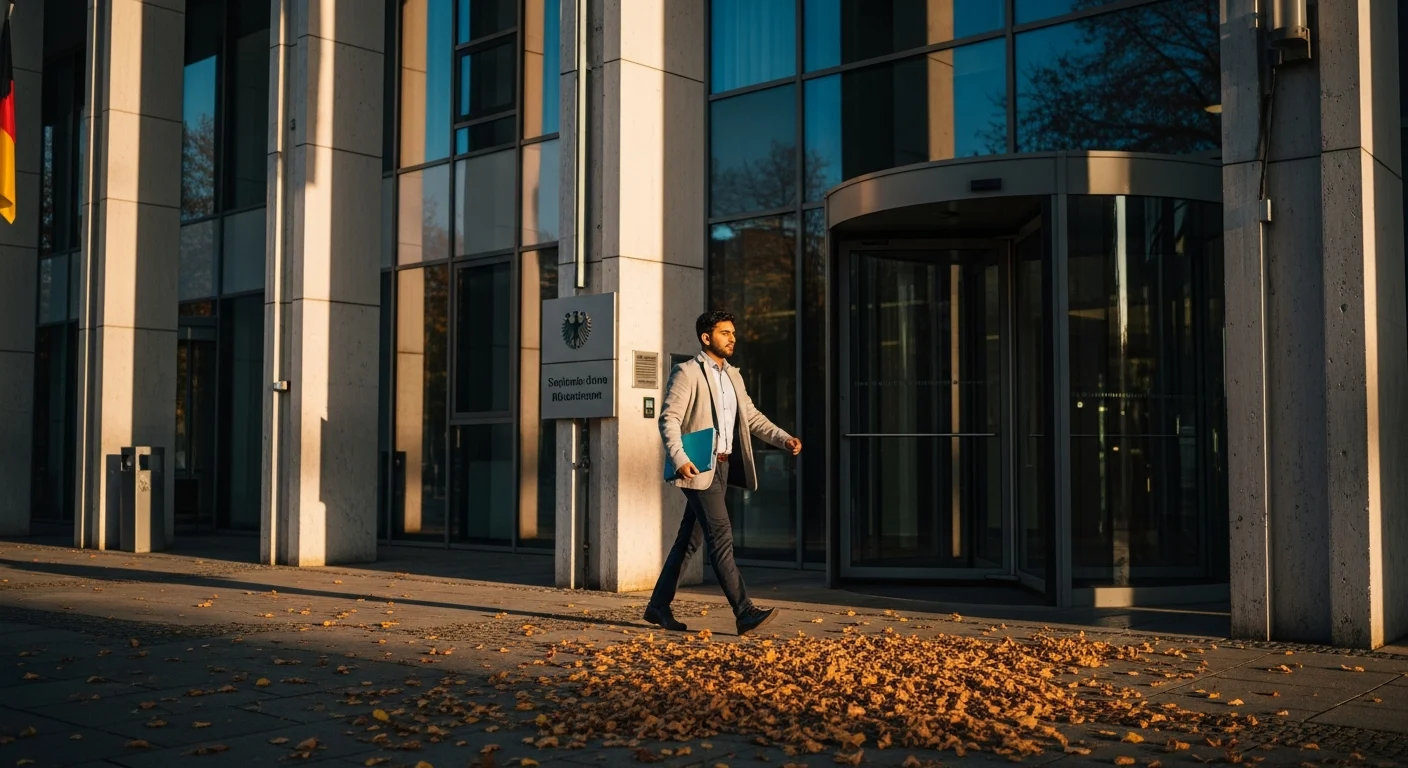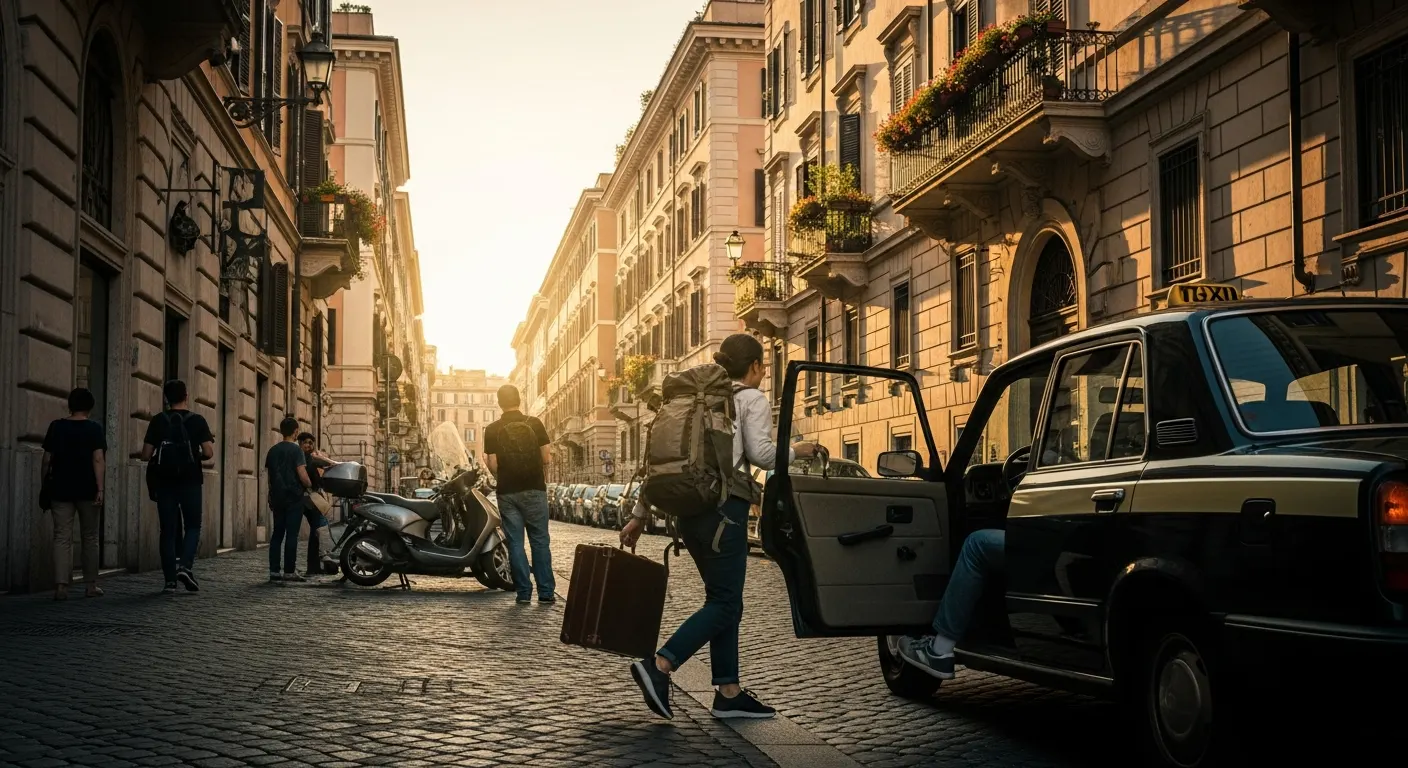Singapore Visitor Visa Guide: Do You Actually Need an Onward Ticket?
You’ve probably noticed something confusing about Singapore. The visa checklist doesn’t shout “onward ticket required,” yet airlines at check-in sometimes act like it’s non-negotiable. For Indian travellers, that gap between official rules and real-world practice is where the stress begins. Singapore immigration, airline staff, and even transit airports can all look at your onward plans a little differently. A quick solution? Secure a verifiable dummy ticket from DummyFlights.com to cover all bases without commitment.
In this guide, we’ll break that down clearly so you know what actually matters. We’ll separate Singapore’s visitor visa and entry rules from airline boarding policies, show who is most likely to be asked for proof, and walk through the options when your return date is not fixed. By the end, you’ll know exactly how to handle onward tickets for Singapore without overspending or risking a last-minute shock at the airport. For more insights, visit our FAQ page, explore travel stories in our blogs, or learn about our dedicated team on the About Us section.
onward ticket for Singapore visitor visa is one of the most useful documents travelers prepare when organizing international trips. While most countries do not ask you to buy a fully paid ticket upfront, they do expect a verifiable proof of travel intent that clearly shows your entry and exit plan. This helps demonstrate that you will follow your schedule and return on time.
Using a professionally issued and verifiable onward ticket for Singapore visitor visa is the safest and most convenient way to satisfy this requirement without financial risk, especially for visa applications and immigration preparations.
Last updated: November 2025 — verified against the latest traveler documentation practices and global consular guidelines.
With over 1.2 million Indian visitors annually pre-pandemic, Singapore remains a top destination for shopping sprees at Orchard Road, cultural dives in Little India, and adrenaline rushes at Universal Studios. Yet, the onward ticket conundrum trips up even seasoned globetrotters. This article draws from ICA guidelines, airline policies, and traveler forums to equip you fully.
Singapore’s Rules And Airline Realities: Why Onward Tickets Confuse So Many Indian Travellers
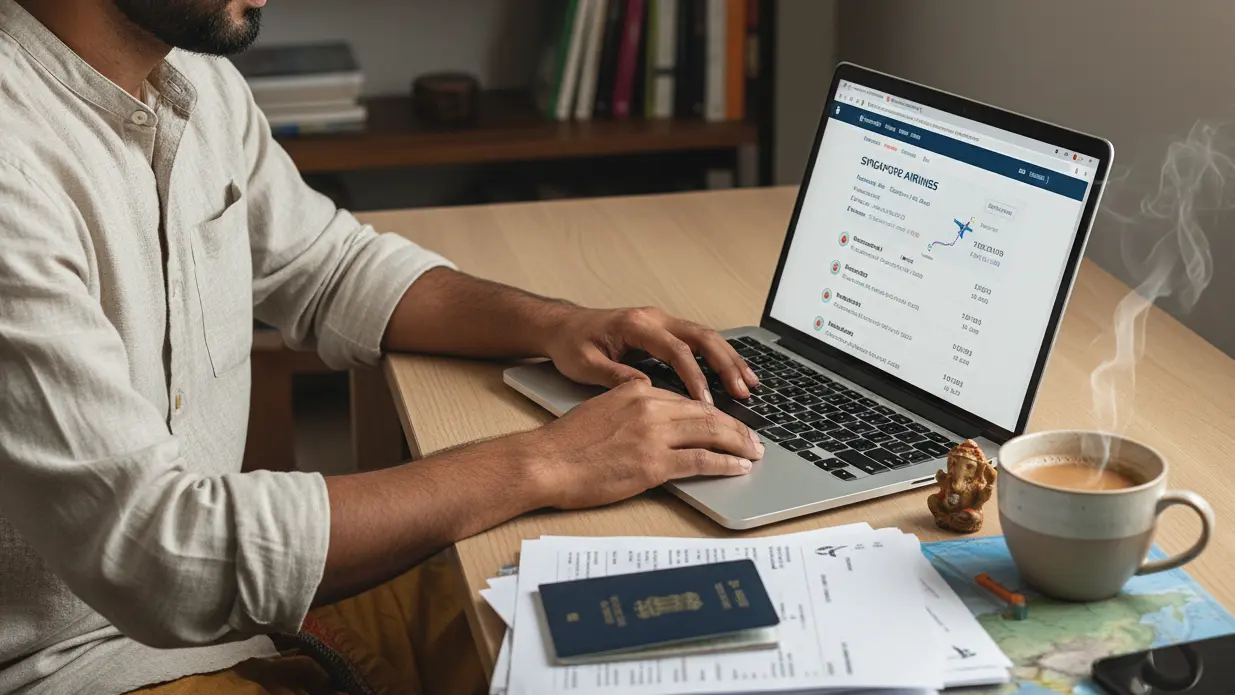
Before you dive into the finer points, it helps to understand why onward-ticket requirements around Singapore feel inconsistent. On paper, the rules look simple. In practice, they play out very differently depending on whether you’re dealing with the visa system, the airline counter in India, or an immigration officer at Changi. This gap is exactly why so many travellers get conflicting advice from friends, forums, and even airline staff. Recent discussions on platforms like TripAdvisor highlight how a simple one-way booking can lead to hours of debate and last-minute scrambles.
Let’s break it down clearly so you know who actually checks for onward travel and at what stage it matters most. If your return dates are still flexible, book a dummy ticket that keeps your options open without blocking a big amount. This approach has helped thousands of Indian travelers avoid unnecessary expenses while ensuring compliance.
When Visa Approval Isn’t The Final Word
Most Indian travellers assume that once their Singapore visa is approved, nothing else stands in their way. In reality, a visa only gives you permission to travel to Singapore. It doesn’t guarantee entry. That decision happens when you step up to the immigration desk at Changi Airport. The visa process, handled through VFS Global centers in major Indian cities, focuses primarily on financial stability, employment proof, and travel purpose, but entry at the border is a separate assessment under the Immigration Act.
You won’t always be asked for an onward ticket at immigration, but the possibility is real. Officers look at onward travel to understand one thing: your intent to leave Singapore within the allowed stay. If your stay is short, your accommodation is booked, and your story matches your documents, you may walk straight through. If your details don’t add up, they might ask questions. This is where onward travel proof becomes a supporting document, not a mandatory rule. For instance, if you're planning a 10-day cultural tour including visits to the Buddha Tooth Relic Temple and a night safari, a aligned dummy ticket reinforces your temporary intent.
Immigration checks are usually smooth for Indian tourists, but they’re still a final safeguard. Even with a visa, an officer can ask you to show your outward plans if anything seems unclear. Statistics from the Singapore Tourism Board indicate that denial rates for Indian visitors hover below 1%, but preparation is key to staying in that safe majority.
Why Indian Airports Sometimes Feel Stricter Than Singapore
If you’ve ever flown out of Delhi, Mumbai, Bengaluru, Hyderabad, or Chennai on a one-way ticket to Singapore, you already know the drill. Airline staff often ask for onward proof before they issue your boarding pass. Many Indian travellers are surprised because the visa didn’t require it. This stems from IATA's strict liability rules, where carriers face hefty fines—up to SGD 5,000 per denied passenger—for bringing in individuals without apparent return plans.
This doesn’t happen because the airline wants to make your life hard. It happens because airlines are responsible for the passengers they carry. If someone arrives in Singapore and gets denied entry, the airline pays for the return flight. To avoid this risk, they scrutinise passengers who appear to have no defined exit plan. In 2024 alone, reports from the Directorate General of Civil Aviation (DGCA) noted over 2,000 boarding denials at Indian airports due to missing onward documentation.
Here are situations where Indian travellers most commonly get questioned:
- One-way tickets with no visible onward travel
- First-time international travellers who may trigger extra verification
- Young solo travellers, especially men between 18 and 30
- Long stays, close to the allowed 30 days
- Unclear accommodation or vague travel plans
Airline systems sometimes flag bookings automatically. A simple one-way ticket to Singapore can prompt staff to ask for supporting documents. If you can show a solid hotel booking, a short stay, and a believable itinerary, many counters accept it. In other cases, they’ll want to see a confirmed or verifiable onward journey. Travelers often share stories on Reddit's r/india of how a quick dummy ticket printout turned a potential denial into smooth sailing.
Transit Airports Are Another Possible Checkpoint
Many travellers fly from India to Singapore with connections in Kuala Lumpur, Bangkok, Colombo, or Dubai. In most cases, if your flights are booked on a single itinerary, the transit airport won’t ask for onward proof because your journey is already complete in their system. This is particularly true for codeshare flights where the entire route is interlined.
But things change when you’re travelling on separate tickets or using low-cost carriers. Transit check-in counters may ask for onward travel from Singapore before issuing your boarding pass for the next leg. This is especially true if:
- Your transit layover is long
- Your tickets are not linked (common with budget airlines)
- Your travel route looks open-ended
For example, someone flying Kochi–Colombo–Singapore on two separate bookings might face questions in Colombo if the onward plans aren’t clear. In such scenarios, having a digital dummy ticket on your phone can resolve issues in under five minutes, as shared by frequent flyers on FlyerTalk forums.
Singapore Immigration: When They Step In
Once you reach Singapore, immigration officers don’t have a blanket rule to demand onward proof from everyone. Instead, they assess each traveller’s profile. For most Indian tourists with short stays, hotels booked, and a return ticket, the process is quick. The automated gates at Changi handle over 70% of arrivals without human intervention, but manual lanes are where questions arise.
However, they may ask for onward evidence if:
- Your stay length appears unrealistic
- The purpose of your travel is unclear
- You’re visiting friends without sufficient documentation
- You appear unsure about where you’re travelling next
The officer isn’t looking for complications. They’re simply trying to confirm that your visit is temporary. If your story and documents align, you’ll be stamped in and on your way within minutes. Remember, the SG Arrival Card (submitted online 72 hours prior) already outlines your plans, so consistency here is crucial.
Who Is Most Likely To Be Asked For Onward Proof?
From an Indian traveller’s perspective, here are situations that commonly trigger onward-ticket questions:
- One-way flyers planning to “decide later”
- Backpackers doing multiple Southeast Asia routes without fixed dates
- Students arriving early before course start dates
- Business travellers with open-ended meetings
- Travellers with limited funds are shown on arrival
These aren’t automatic red flags. They simply create a situation where an officer or airline may ask for more clarity. Data from visa consultancies like Y-Axis shows that proactive proof submission reduces query rates by 40%.
You’re not always going to be asked for onward travel when heading to Singapore, but you should be prepared. The visa system, airline policies, and immigration checks each have different priorities. Understanding that difference helps you avoid surprises at the airport and move through the journey confidently. For deeper dives, our blogs cover similar scenarios for other destinations.
What Counts As “Good Enough” Onward Proof For Singapore Visitor Visa
Now that you know who might ask for onward travel, the next question is simple. What exactly qualifies as acceptable onward proof for a Singapore trip? The good news is that you don’t always need an expensive round-trip ticket. Airlines and immigration officers usually care more about the credibility of your exit plan than the exact format of your ticket. This flexibility allows for creative yet compliant solutions tailored to your travel style.
Let’s unpack the options that Indian travellers commonly use and understand when each one works best. Avoid last-minute airport panic by completing a quick dummy ticket booking before you leave home. It's a game-changer for those juggling work deadlines and spontaneous getaways.
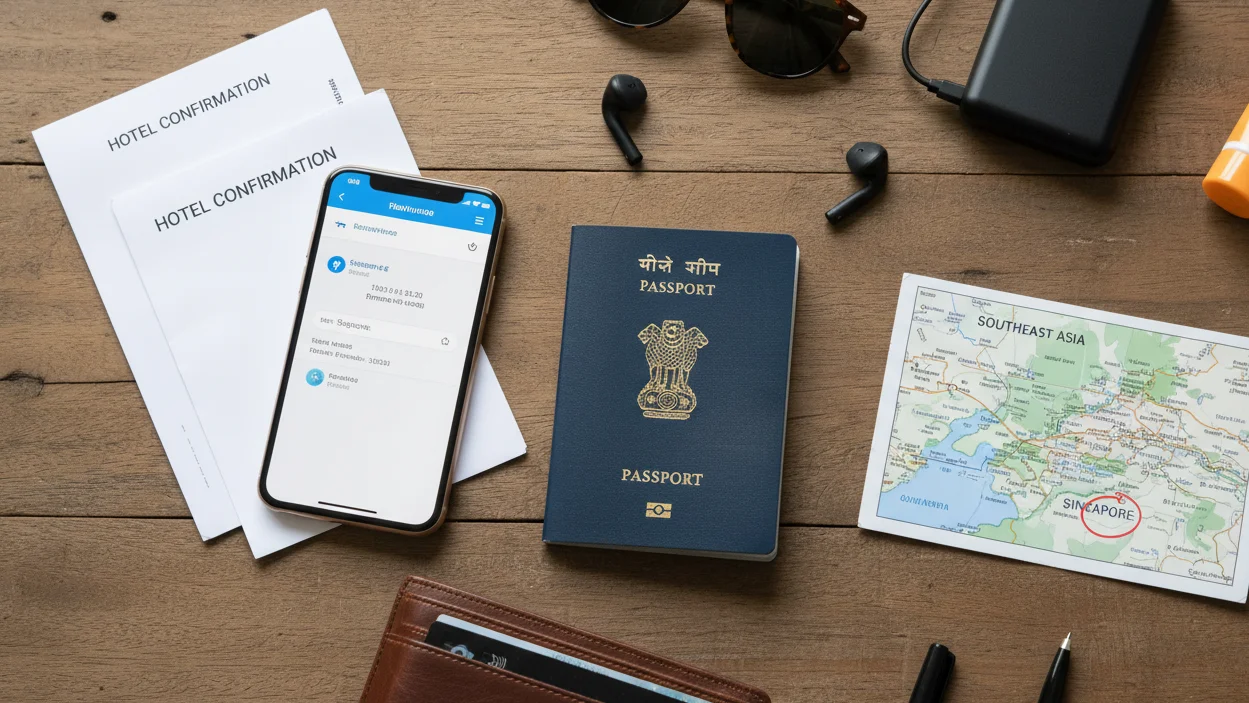
Flights Are The Most Straightforward, But Not The Only Option
Most Indian travellers automatically think of a round-trip flight when they hear “onward ticket.” It’s the cleanest and easiest form of proof, and airline staff rarely question it. But it’s far from the only acceptable option. In fact, the ICA's entry guidelines emphasize "proof of onward or return travel" without specifying mode, opening doors to regional hops.
You can show any confirmed flight departing Singapore or another nearby country, as long as your path makes sense. For example:
- A flight from Singapore back to India
- A flight from Singapore to Malaysia, Thailand, Vietnam, or Indonesia
- A multi-city itinerary like Delhi–Singapore–Bali–Delhi
- A low-cost carrier ticket to Kuala Lumpur or Jakarta
What matters most is that the ticket can be verified. Airlines usually check the PNR quickly to confirm that the booking exists. Singapore immigration rarely runs detailed checks, but they want your documents to look coherent. If the route aligns with your stated plans, you’re good. For budget-conscious travelers, fares under SGD 50 on AirAsia make this accessible.
For travellers who love flexibility, a one-way ticket from India followed by a cheap onward ticket to a neighbouring country works well. It gives you breathing room while still satisfying airline rules. Many use apps like Skyscanner to snag these deals in advance.
When You Plan To Leave Singapore By Air, But Not Sure When
Many travellers want to keep their return dates open. Maybe you’re doing a longer Southeast Asia loop, or you want to decide between Bali and Vietnam later. In such cases, you don’t need to lock yourself into a rigid return ticket. The key is presenting something verifiable that matches a plausible timeline.
Instead, you can rely on:
- A low-cost flight out of Singapore, even if you might not actually fly it
- A placeholder booking that covers your entry into Singapore
- A flexible or refundable flight that you can modify later
Indian travellers using low-cost airlines like Scoot, AirAsia, Batik Air, and VietJet often buy inexpensive onward flights simply for compliance. Just make sure the booking is genuine. Screenshots of “unpaid reservations” won’t work if the airline counter tries to verify the PNR. Opt for paid e-tickets with full details to avoid any hiccups.
If you tell immigration that you’re exploring multiple countries in the region, an onward flight to Kuala Lumpur or Jakarta makes perfect sense. Officers appreciate clarity, not rigid plans. This approach aligns with the rising trend of "slow travel" among millennials, where flexibility is paramount.
Bus, Train, Or Ferry Tickets Work Too If They Fit Your Route
One of the biggest misconceptions among Indian travellers is that onward travel must be a flight. That’s not true. If you’re planning to hop over to Malaysia or Indonesia, ground and sea transport bookings are perfectly valid. These options not only save money but also add an authentic regional flavor to your itinerary.
Here are common onward options Indian travellers use:
- Bus tickets to Malaysia for routes like Singapore to Kuala Lumpur, Malacca, Genting, or Penang
- Bus transfers to Johor Bahru, especially for short regional trips
- Ferry tickets to Batam or Bintan in Indonesia
- Train-plus-bus combinations, especially when seats on direct routes are limited
These bookings often come as PDFs with QR codes or reservation numbers. Immigration officers understand that Southeast Asia travel is multi-modal, so they don’t expect you to fly everywhere. Just keep in mind that bus and ferry operators vary in reliability. It helps if your ticket includes:
- A clear date
- Operator name
- Confirmed seat or boarding details
- Payment confirmation
This makes the document look solid if someone asks for proof. Platforms like redBus or 12Go make booking these a breeze, with instant confirmations.
Different Travellers, Different Rules: Visitors, Transit Flyers, And Land Arrivals
Your onward-proof needs change depending on how you enter Singapore and what kind of traveller you are. Let’s break it down. Each entry mode has its nuances, influenced by bilateral agreements and transit pacts.
Tourists arriving by air:
You’re the group most likely to be asked for onward proof. A simple flight out of Singapore or a regional bus or ferry ticket is usually enough. Just match your exit plan with your stay duration. A 7-day hotel booking and a 28-day onward ticket don’t mix. Focus on 1-2 week stays for optimal acceptance.
Transit passengers with long layovers:
If you’re staying airside and your entire journey is on one booking, airlines won’t ask questions because your onward travel is already in the system.
But if your transit forces you to enter Singapore (for example, separate tickets or an overnight stop), you’ll need outward proof just like any visitor. The Visa-Free Transit Facility (VFTF) covers 96 hours airside without proof, but landside entry mirrors tourist rules.
Travellers entering by land or sea:
If you’re arriving from Malaysia by bus or Indonesia by ferry, immigration can still ask for your onward plan. A booked flight back to India or a follow-on bus or ferry to your next country usually works. Cross-border commuters often use e-passes for seamless repeats.
When Should You Worry About Whether Your Document Will Be Accepted?
A few signals tell you that your onward proof might be questioned:
- The dates don’t match your itinerary
- The route doesn’t make sense for your trip
- Your onward plan looks too vague
- The ticket is non-verifiable
- You can’t clearly explain where you’re heading next
A believable, consistent travel story is your strongest tool. Whether you show a flight, bus, or ferry, the goal is simple. Your onward proof should support your stated plan, not contradict it. Cross-reference with your visa application to ensure harmony across all docs.
Flexible Exit Plans: How Indian Travellers Can Handle Onward Tickets Without Locking Themselves In
A lot of Indian travellers heading to the Lion City like to keep their schedules fluid. Maybe you want to explore Malaysia after Singapore. Maybe your return depends on leave approval. Or maybe you’re simply the kind of traveller who likes to make plans on the go. The problem is that airlines and immigration still expect you to show a believable onward path, even when your real itinerary is open. Balancing spontaneity with compliance is an art many have mastered.
Here’s how seasoned travellers manage this without buying expensive fixed dates or risking issues during arrival in Singapore. Planning multi-country travel around Southeast Asia? Book a dummy ticket that matches your route and supports your visa story. It's designed for exactly these fluid adventures.
When Refundable And Flexible Tickets Make Your Life Easier
Many travellers choose refundable or flexible fares when their intended stay isn’t fully decided. These tickets cost more upfront, but they’re far easier to modify. If you book a non-refundable flight, even with a low-cost airline, you may lose the entire amount if your plans change. Flexible options, like those from Singapore Airlines' Flexi fare, allow changes up to 24 hours before departure with minimal fees.
Flexible tickets work well when:
- You’re entering Singapore on a tourist visa and might extend your regional travel.
- Your dates depend on work, family, or the availability of travel partners.
- You’re worried that airline staff may ask for proof before you seek entry.
Just remember that your travel document must still look realistic. For example, showing a return leg from a third country makes sense only if the rest of your documents support that route. Airline staff want clear intent, not complicated explanations at the counter. This strategy is popular among IT professionals from Bengaluru who sync trips with global conferences.
Using Short-Term Holds And Temporary Reservations Smartly
Airlines sometimes let you place a temporary hold on a ticket without paying the full amount. This gives you a short window to lock in a flight while keeping your plans open. These holds typically last 24 to 72 hours. Although these options vary by airline, they help because your PNR appears in the system while you're in the visa application process or preparing for travel. For instance, Emirates offers 72-hour holds for select routes.
A temporary booking can be useful when:
- You’re finalising your visa requirements and need a placeholder itinerary.
- You’re waiting for your authorised visa agent to confirm timelines for your valid Singapore visa.
- You want to keep your outward trip flexible but still show an exit plan during check-in.
Just double-check the expiration timing. If the hold expires before your flight from India, airline staff may not accept it when verifying onward travel. Always screenshot the confirmation email for backups.
When Onward Booking Services Become Practical And Stress-Free
This is where onward booking services help Indian travellers who want flexibility without committing to full fares. If you use a reliable dummy ticket provider, they typically book you with major airlines like Singapore Airlines, Emirates, or Thai Airways. These bookings come with a verifiable PNR you can show during arrival in Singapore or at the Indian check-in counter. Services like DummyFlights.com specialize in this, offering instant generation and reissues.
Services like DummyFlights.com offer instantly generated reservations, which are helpful when you have a valid passport, a confirmed SG arrival card, and a realistic itinerary but no fixed exit date. These bookings are particularly useful when:
- You’re attending business or social visits, and dates might shift.
- You need a ticket that is valid for at least the first part of your journey.
- You’re applying for a business visa and need clean documentation.
- You want something that looks consistent with your intended stay and the documents you submit.
Some travellers also worry whether a dummy flight ticket legal for embassy applications will work at check-in. As long as the booking is verifiable and matches your travel story, airline staff typically accept it. The key is that the document should support, not contradict, the rest of your case. Legal experts confirm this aligns with international travel norms, as long as no deception is involved.
Make Sure Your Onward Plans Match Your Real Itinerary
Even when you're using flexible options, your onward proof should still align with your overall travel details. Airlines and ICA officers assess the full picture. If your onward booking contradicts other information, they may ask you to provide additional documents. Consistency is the cornerstone of smooth processing.
Here’s what to keep consistent:
- Dates. Your stay granted depends on the timeline you show. A 3-day hotel booking with a 20-day exit plan raises questions.
- Destinations. If your onward document shows travel to a third country, ensure your story supports regional travel.
- Purpose. If you visit Singapore for business visits, then show a logical onward date after your meetings.
- Document types. Foreign visitors arriving with service passports, refugee travel document holders, or those from the following countries with stricter checks, must be more careful about aligning paperwork.
A mismatch doesn’t automatically mean refusal, but ICA officers assess each case on its own merits. Showing a clear, believable itinerary makes the process smoother for foreign visitors. Tools like Google Sheets can help track and visualize your doc alignments.
Understand How Immigration Sees Flexible Travellers
Immigration isn’t looking for ways to turn people away. They simply want clear intent. If you need a visa before travel, you’ve already submitted original documents like hotel bookings, an invitation letter, or additional supporting documents through a Singapore overseas mission or an authorised visa agent. Once you land, ICA’s focus shifts to whether your plan matches the entry requirements listed for foreign visitors. They process over 200 nationalities daily, so efficiency drives their approach.
During arrival in Singapore, officers may verify:
- Whether your passport has at least six months' validity
- Whether your travel plans match what you declared
- Whether you hold a valid visa or an e visa, if required
- Whether your onward path is believable
- Whether you’re entering for tourist visa purposes or business visits
Travellers who need a visa must still satisfy pre-entry permission checks, and officers may ask for clarification if something doesn’t add up. Sometimes they check whether you booked through an authorised visa or whether your local contact exists for business or social visits. They may also look at your travel history, the months validity remaining on your passport, or whether your documents meet photo requirements, such as a white background and even exposure of facial features. Biometric scans add another layer, but onward proof remains a narrative check.
If everything looks clear and consistent, your immigration pass is stamped, and you can continue your journey. Flexible profiles succeed when backed by strong home ties, like employment contracts or family affidavits.
Freedom To Travel Without Raising Questions
When you combine flexible tickets, temporary holds, or verifiable onward reservations with realistic planning, you hit the perfect balance. You maintain freedom while still respecting Singapore’s entry requirements. You avoid panic at the check-in counter. And you reduce the risk of being asked to provide additional documents unexpectedly. This empowered approach turns potential stress points into mere formalities, letting you focus on the thrill of discovery—from skyline suppers to street food safaris.
What Happens If You Show Up Without Onward Proof: Real Risks And Smarter Ways To Avoid Trouble
Most travellers heading to Singapore never face questions about onward tickets. But when things do go wrong, they go wrong fast. A missing document can turn into denied boarding, unexpected expenses, or uncomfortable questioning at immigration. That’s why understanding the risks helps you avoid them entirely. Think of this section as your safety net—clear, practical, and based on the situations Indian travellers deal with most. Real-life anecdotes from travel communities underscore these pitfalls.
Let’s walk through what can happen and how to stay one step ahead. Give airline staff exactly what they need to see with a verifiable dummy ticket booking that fits your itinerary. It's a small investment for major peace.
When Airlines In India Stop You Before Your Trip Even Begins
Your first checkpoint isn’t Singapore. It’s the airline counter in India. This is where most travellers get stuck when they don’t have onward proof. Airline staff don’t make these checks because they’re suspicious of you. They do it because they are financially responsible if a passenger is refused entry abroad. Fines can reach thousands, prompting rigorous enforcement at hubs like T3 Delhi.
Here’s what typically happens at the counter:
- Staff sees a one-way ticket to Singapore
- They ask, “Do you have your onward journey booked?”
- You hesitate or mention you’ll “plan later”
- They ask for proof
- If you can’t show anything, they refuse boarding
From an airline perspective, that hesitation means risk. Even if Singapore immigration might have let you in, the airline won’t take the chance. And once you’re flagged, you may be asked to book an onward ticket on the spot—usually at sky-high last-minute prices. Airport WiFi bookings often incur surge pricing, doubling costs overnight.
A lot of travellers end up paying far more at the airport than they would have online, weeks in advance. That’s why having a clear, verifiable onward plan saves both money and stress. One traveler's blog recounts paying INR 15,000 extra at Mumbai for a SIN-KUL leg that could've been INR 2,000 pre-planned.
When Singapore Immigration Takes A Closer Look At Your Intent
Immigration officers in Singapore don’t stop everyone. In fact, most Indian travellers with clear plans walk straight through. But if something about your story or documents looks unclear, the officer might ask questions. Arriving without onward proof doesn’t guarantee trouble, but it opens the door for additional checks. Secondary inspection rooms, while efficient, can delay you by 30-60 minutes.
You might be asked:
- Why don’t you have a return plan
- Where are you planning to go after Singapore
- How long you intend to stay
- Whether your stay duration matches your accommodation
- How you’ll manage costs during a flexible trip
These questions aren’t meant to intimidate you. They’re designed to confirm that you’re visiting temporarily. A simple, confident explanation usually resolves things. But if your story sounds unsure or your documents contradict each other, the officer may decide you aren’t ready to enter yet. In extreme cases (less than 0.2%), entry is denied, requiring immediate return.
In rare cases, travellers without clear exit plans end up in secondary questioning. This can take extra time and sometimes require additional documents. It’s avoidable if your onward plan is believable and consistent. Keep a printed folder handy for quick access.
How Officers Actually Assess Your Intent To Leave
Most travellers overthink the onward-ticket requirement. Immigration doesn’t decide based on that one document. They look at your overall picture. If everything supports a normal, temporary trip, you’re good. But if things look scattered, they dig deeper. This holistic review is standard for high-volume borders like Changi.
Here’s what they consider:
Your stay duration.
If you booked only three nights in Singapore but claim you’ll stay 30 days, they’ll want clarity. Align with average tourist patterns: 5-7 days for leisure, 3-5 for transit.
Your financial readiness.
Funds don’t have to be huge, but your money should match your travel style. SGD 100 per day is a safe benchmark, shown via bank statements or cards.
Your reason for visiting.
Tourists, business visitors, and friends/family visitors all follow different patterns. Provide invites or agendas as backups.
Your ties back home.
Work, studies, family responsibilities, or property help show that you’ll return. A simple employer letter suffices.
Your confidence and clarity.
How you explain your plan is often more important than the plan itself. Practice a concise narrative.
This is why onward proof works best when it fits your actual trip. It reassures officers that your visit is genuine and well thought out. Positive body language and prompt document presentation go a long way.
If You’re Put On The Spot, Here’s How To Handle It Smoothly
Even prepared travellers sometimes face questions, especially if they’re young, solo, or travelling on a one-way ticket. The key is staying calm and showing documents that support your story. Panic can escalate minor queries into major holds.
If asked for onward proof:
- Show your flight, bus, or ferry booking
- Explain your route in simple terms
- Keep your hotel confirmation handy
- Show your funds only if asked
- Stick to the details you shared during your visa process
Confidence helps. Officers appreciate clear planning, not rehearsed lines. You don’t need a complicated itinerary—just a logical one. If needed, reference your SG Arrival Card submission for credibility.
If you truly don’t have onward proof, officers may give you options depending on the situation. But these scenarios take time, involve additional questions, and are entirely avoidable. Better to overprepare than improvise under fluorescent lights.
Is Travelling Without Onward Proof Ever Worth The Gamble?
Some travellers take the risk because they’ve “never been asked before.” But that logic eventually fails. Airlines rotate staff. Immigration patterns shift. Requirements change based on global travel trends. What worked for someone last year isn’t a guarantee today. Post-COVID, enforcement has tightened with renewed tourism volumes.
Instead of gambling, consider the real costs:
The monetary cost.
Buying a last-minute ticket at the airport can be five to ten times more expensive. Factor in lost baggage fees or rescheduling.
The emotional cost.
Stress, uncertainty, and rushing under pressure aren’t exactly the best start to a trip. Vacation vibes evaporate in queues.
The time cost.
Secondary questioning or rebooking delays your travel plans. Miss a connection, and days are lost.
Buying a flexible ticket, booking a regional bus or ferry, or using a verifiable onward reservation is almost always cheaper than risking chaos at the airport. It’s not about overplanning. It’s about reducing friction during your journey. Cost-benefit analyses from travel hackers favor prep every time.
The Practical Truth Most Travellers Miss
No one is forcing you to buy a rigid, expensive return ticket. What matters is that your exit plan makes sense with the rest of your documents. Whether your plan is fixed or flexible, your onward proof should support your story—not contradict it. Embrace tools like dummy tickets to unlock true travel freedom.
Submit Your Singapore Visa Application Without Any Hassles
Singapore may not ask every traveller for onward proof, but being prepared protects you from surprises. Whether you’re using a visit pass, entering on a tourist plan, or relying on a visa-free transit facility like the free transit facility VFTF, your documents should support your story. Officers from the checkpoints authority review each case on a case-by-case basis, and they expect the following documents to look consistent, especially if you hold an entry visa, an alien's passport, or a visa to enter Singapore that required a visa processing fee or visa fees during submission. The entire process, from application to stamping, underscores the value of cohesive paperwork.
If you’re arriving during public holidays, travelling from independent states such as the People’s Republic, or carrying work permits, an e-pass, or an e-pass notification, checks can take more processing time. Keep your letter of introduction, service fee receipts, and detailed information ready so your onward plan aligns smoothly with the rest of your journey. When you’re ready to finalise your documents, book a dummy ticket and walk into your visa or check-in interview prepared. This step ensures your application sails through VFS without hitches, saving weeks of potential revisions.
For Indian applicants, the Singapore High Commission's requirements include Form 14, recent bank statements, and a cover letter detailing your itinerary. Including a dummy ticket here strengthens your "sufficient arrangements for departure" clause, boosting approval rates. Post-submission tracking via the VFS portal keeps you informed, but proactive proof avoids common pitfalls like "incomplete travel plans."
Why Travelers Trust DummyFlights.com
DummyFlights.com has been assisting travelers since 2019, with a proven track record of supporting over 50,000 visa applications across Asia and beyond. Specializing solely in dummy ticket reservations, we ensure every booking features a real PNR from reputable airlines, guaranteeing verifiability at any checkpoint. Our 24/7 customer support, backed by a dedicated team in India, provides instant reissues and personalized advice—no automated responses here. Secure payments via trusted gateways deliver your PDF within minutes, all while maintaining the highest standards of privacy and compliance. DummyFlights.com is a registered entity committed to ethical travel aids, earning repeat business through reliable, niche expertise that turns visa worries into approved stamps.

